- Kenmore refrigerator water filters
- Whirlpool refrigerator water filters
- Samsung refrigerator water filters
- GE refrigerator water filters
- LG refrigerator water filters
- Frigidaire refrigerator water filters
- KitchenAid refrigerator water filters
- Maytag refrigerator water filters
- Kenmore Elite refrigerator water filters
- Estate refrigerator water filters
- GE Profile refrigerator water filters
- Amana refrigerator water filters
- Bosch refrigerator water filters
- Dacor refrigerator water filters
- Electrolux refrigerator water filters
How to replace a refrigerator temperature control thermostat
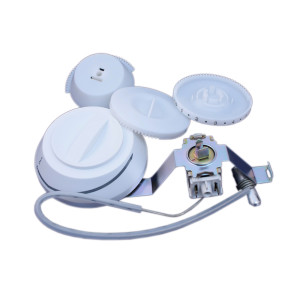
This repair guide explains refrigerator temperature control replacement for a control thermostat installed in the control housing of a refrigerator.
If the refrigerator isn't at the temperature you set, the control thermostat might not sense the temperature correctly or might not signal the compressor to turn on. In either case, you can replace the refrigerator thermostat using the manufacturer-approved refrigerator temperature control replacement part that fits your model.
This basic procedure works for Kenmore, Frigidaire, Whirlpool, Gibson, Crosley, GE, Haier and other brands of refrigerators.
Quick links
Instructions
Tools required
Screwdriver
Work gloves
Repair difficulty
Time required
15 minutes or less
Repair difficulty
Time required
15 minutes or less
Instructions
- 01.
Disconnect electrical power
Unplug the refrigerator or shut off the circuit breaker for the refrigerator. Move highly perishable food to a cooler or other cooled space. The refrigerator will be without power for about 30 minutes, which shouldn't affect most refrigerated or frozen foods.
- 02.
Remove the control knob
Pull the control knob straight off the front of the the temperature control thermostat and set it aside.
- 03.
Detach the control housing
Remove the screws that secure the control housing to the top of the refrigerator compartment. Support the control housing so it doesn't fall after you remove the last screw. Carefully lower the control housing about 6 inches, wires prevent you from lowering it further.
- 04.
Release the temperature control thermostat
Release the brackets that hold the temperature control thermostat and the sensing tube in place. Pull temperature control thermostat and the sensing tube from the control housing.
If an insulation sleeve covers the sensing tube, remove the sleeve and save it to use on the sensing tube on the new temperature control thermostat.
- 05.
Disconnect the wires
Take a digital picture of the wires or tag them with numbered pieces of masking tape so you know how to reconnect them.
Remove the wires and pull the temperature control thermostat out of the refrigerator. Set it aside for disposal.
- 06.
Connect the wires to the new thermostat
Remove the new temperature control thermostat from its package and carefully straighten the sensor tube. If an insulation sleeve covered the old sensing tube, transfer it to the sensing tube on the new temperature control thermostat.
Connect the wires to the new temperature control thermostat, using the digital image as a guide.
Warning: Incorrectly connecting the wires can damage the refrigerator component. If you're uncertain how to connect the wires, have a service technician complete this repair. - 07.
Insert the new temperature control thermostat into the bracket
Properly position the temperature control thermostat and the sensing tube in the control housing and push it into the brackets. The new temperature control thermostat should fit into the control housing the same way the removed temperature control thermostat did.
- 08.
Attach the control housing
Carefully push the control housing into position, making sure the wires are properly positioned so the edges of the control housing won't pinch them. Insert the mounting screws, tighten them until they stop turning and then give the screws a reasonably firm twist to secure them.
- 09.
Reinstall the control knob
Position the control knob on the front of the stem properly and push it onto the stem completely.
- 10.
Restore electrical power
Plug in the refrigerator or turn on the house circuit breaker to restore power.
Warning: Undertaking repairs to appliances can be hazardous. Use the proper tools and safety equipment noted in the guide and follow all instructions. Don’t proceed until you’re confident that you understand all the steps and are capable of completing the repair. Some repairs should only be performed by a qualified technician.
Most common symptoms to help you fix your refrigerators
Choose a symptom to see related refrigerator repairs.
Main causes: control board or cold control failure, broken compressor start relay, compressor motor failure, defrost tim…
Main causes: jammed ice cubes, broken ice maker assembly, dirty water filter, kinked water line, bad water valve, freeze…
Main causes: water valve leaking, frozen or broken defrost drain tube, overflowing drain pan, cracked water system tubin…
Main causes: damaged door seal, faulty defrost sensor or bi-metal thermostat, broken defrost heater, bad defrost timer o…
Main causes: blocked vents, defrost system problems, evaporator fan failure, dirty condenser coils, bad sensors, condens…
Main causes: blocked air vents, compressor problems, condenser or evaporator fan not working, control system failure, se…
Main causes: leaky door gasket, defrost system failure, evaporator fan not running, dirty condenser coils, condenser fan…
Things to do: clean condenser coils, replace the water filter, clean the interior, adjust doors to prevent air leaks, cl…
Most common repair guides to help fix your refrigerators
These step-by-step repair guides will help you safely fix what’s broken on your refrigerator.
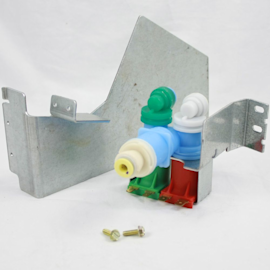
How to replace a refrigerator water valve
Replace the water valve that feeds water to the ice maker and water dispenser if it no longer controls the flow of water…
Repair difficulty
Time required
15 minutes or less

How to clean refrigerator condenser coils
Help your refrigerator run more efficiently by cleaning the condenser coils. It's easy and takes just a few minutes.…
Repair difficulty
Time required
15 minutes or less
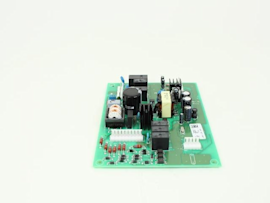
How to replace a refrigerator temperature control board
If the temperature in your refrigerator doesn't match the temperature you set, the problem could be the temperature cont…
Repair difficulty
Time required
30 minutes or less
Effective articles & videos to help repair your refrigerators
Use the advice and tips in these articles and videos to get the most out of your refrigerator.
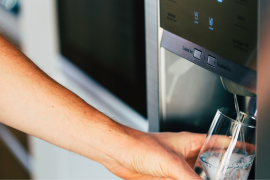
No matter what style Maytag refrigerator you have, we can walk you through replacing the water filter.…

Learn about all the convenient features on our Sears PartsDirect website that make your parts purchases easier.…
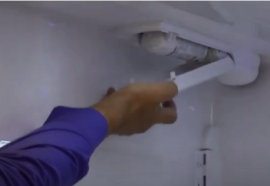
Get tips and advice on replacing the water filter in your LG refrigerator.…